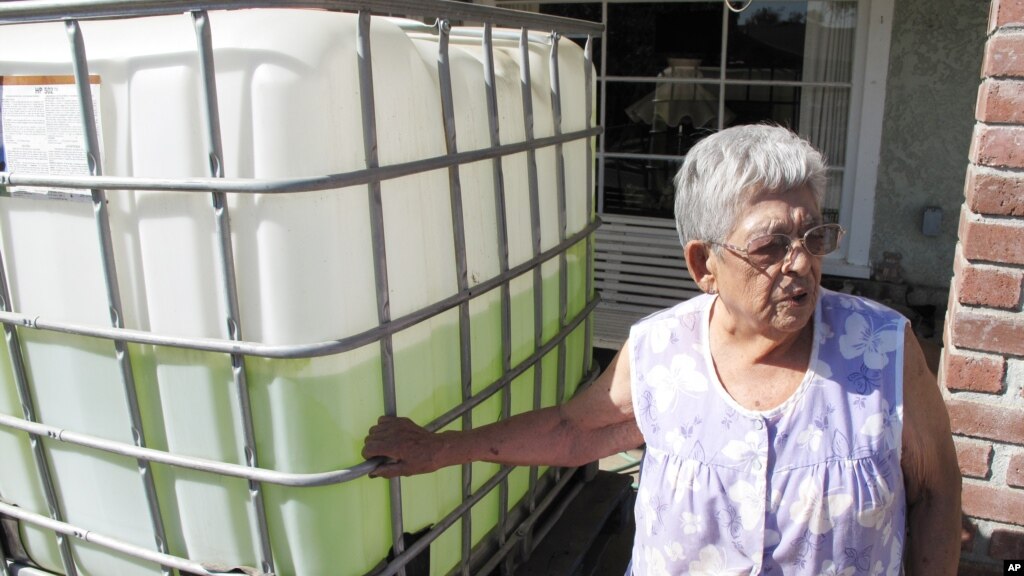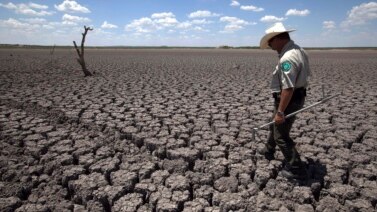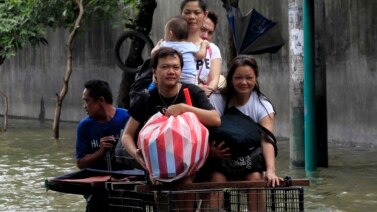
Severe drought has struck California for a third year. The lack of water is affecting farms, cities and small communities. California’s Central Valley is usually fertile. But the lack of rainfall has left hundreds of homes without water.
The Porterville Area Coordinating Council provides food and other help to needy families. But right now, the families badly need water. Some of the land has not been planted because of lack of water. A man drives up to an old food-package house. The building serves as the headquarters of the Porterville Area Coordinating Council. The man’s pick-up truck is loaded with plastic barrels. A volunteer fills these containers with water. Nearby people are loading cars and other vehicles with cases of drinking water.
Debbie Martinez lives on a ranch, a large farm that is not connected to the local water system. She has a water well. But she says it is dry.
“Yes, it’s been (dry) three years. My neighbor had given me water, but their wells are going dry, too.”
California’s system of aqueductscarries water to cities and small towns. But this part of Tulare County is far from any city. A lower than normal amount of water under the ground has left some wells with little or no water. Council volunteer Fred Beltran says this situation has affected more than 300 homes in this neighborhood.
“And these are all individual wells that are drying up or they’re pumping poor quality of water, which is either sand, dirt or high nitrates.”
California Governor Jerry Brown recently signed bills to regulate ground water to prevent shortages. He ordered delivery of emergency drinking water for people who have none.
Tulare County water expert Denise England says people need clean water for drinking and cooking.
“But the bigger challenge we’re facing now is what we’re calling sanitation water, so water that’s not potable, that’s not drinkable, but you can take a shower with it or do your dishes with it or bathe.”
Elva Beltran directs the Porterville Area Coordinating Council. She says her group has provided large open-air water tanks for many people. She says, “We have 54 tanks right now.”
The Council gets its money from area residents and religious groups.
Much of the work here involves giving water to people like Michael Burrough.
“I don’t know what else to do. All the water we can get is from the sources like right here. Other than that, I have to buy water and I don’t really have the extra money to buy cases of water.”
Officials say providing these families with water is highly important. But for now, the people depend on their neighbors, local government and private agencies to get the water they need to survive.
I’m Anna Matteo.
This report was based on a story from VOA reporter Mike O’Sullivan. Jeri Watson wrote the story for Learning English. The editor was George Grow.
Words in This Story
right now – idiom, immediately
well – n., a deep hole in the ground through which water can be removed
ranch – n., a large farm for raising horses, beef cattle or sheep
delivery – n., the act of taking something to a person or place; something taken to a person or place
regulate – v., to make regulations (rules) for
aqueduct – n., an artificial channel for conveying water
resident – n., a person who lives somewhere permanently or on a long-term basis

